#Victorians
Explore tagged Tumblr posts
Text
An amateur historian has discovered a long-lost short story by Bram Stoker, published just seven years before his legendary gothic novel Dracula. Brian Cleary stumbled upon the 134-year-old ghostly tale while browsing the archives of the National Library of Ireland. "Gibbet Hill" was originally published in a Dublin newspaper in 1890 - when the Irishman started working on Dracula - but has been undocumented ever since.
...
After his initial sleuthing, Mr Cleary contacted biographer Paul Murray - who confirmed there had been no trace of the story for over a century. He said 1890 was when he was a young writer and made his first notes for Dracula.
"It's a classic Stoker story, the struggle between good and evil, evil which crops up in exotic and unexplained ways," he added.
88 notes
·
View notes
Text
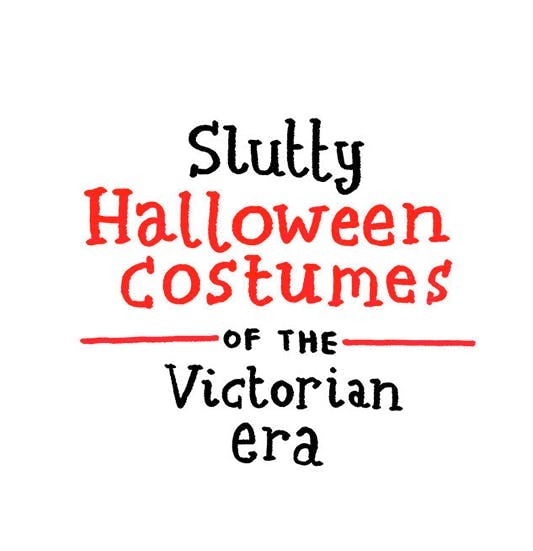

549 notes
·
View notes
Photo
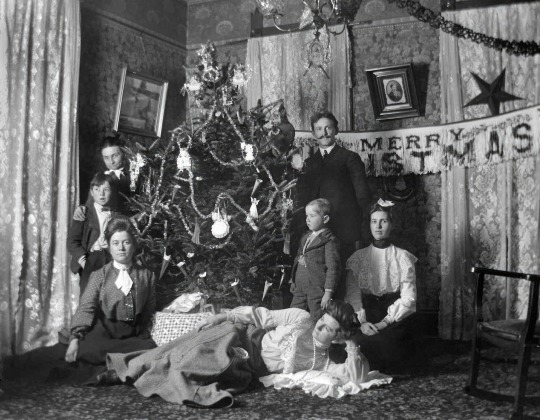
The history of Christmas traditions kept evolving throughout the 19th century, when most of the familiar components of the modern Christmas including St. Nicholas, Santa Claus, and Christmas trees, became popular. The changes in how Christmas was celebrated were so profound that it's safe to say someone alive in 1800 would not even recognize the Christmas celebrations held in 1900.
Washington Irving and St. Nicholas
Early Dutch settlers of New York considered St. Nicholas to be their patron saint and practiced a yearly ritual of hanging stockings to receive presents on St. Nicholas Eve, in early December. Washington Irving, in his fanciful History of New York, mentioned that St. Nicholas had a wagon he could ride “over the tops of trees” when he brought “his yearly presents to children.”
The Dutch word “Sinterklaas” for St. Nicholas evolved into the English “Santa Claus,” thanks in part to a New York City printer, William Gilley, who published an anonymous poem referring to “Santeclaus” in a children’s book in 1821. The poem was also the first mention of a character based on St. Nicholas having a sleigh, in this case, pulled by a single reindeer.
Clement Clarke Moore and The Night Before Christmas
Perhaps the best-known poem in the English language is “A Visit from St. Nicholas,” or as it’s often called, “The Night Before Christmas.” Its author, Clement Clarke Moore, a professor who owned an estate on the west side of Manhattan, would have been quite familiar with the St. Nicholas traditions followed in early 19th century New York. The poem was first published, anonymously, in a newspaper in Troy, New York, on December 23, 1823.
Reading the poem today, one might assume that Moore simply portrayed the common traditions. Yet he actually did something quite radical by changing some of the traditions while also describing features that were entirely new.
For instance, the St. Nicholas gift giving would have taken place on December 5, the eve of St. Nicholas Day. Moore moved the events he describes to Christmas Eve. He also came up with the concept of “St. Nick” having eight reindeer, each of them with a distinctive name.
Charles Dickens and A Christmas Carol
The other great work of Christmas literature from the 19th century is A Christmas Carol by Charles Dickens. In writing the tale of Ebenezer Scrooge, Dickens wanted to comment on greed in Victorian Britain. He also made Christmas a more prominent holiday and permanently associated himself with Christmas celebrations.
Dickens was inspired to write his classic story after speaking to working people in the industrial city of Manchester, England, in early October 1843. He wrote A Christmas Carol quickly, and when it appeared in bookstores the week before Christmas 1843 it began to sell very well.
The book crossed the Atlantic and began to sell in America in time for Christmas 1844, and became extremely popular. When Dickens made his second trip to America in 1867 crowds clamored to hear him read from A Christmas Carol. His tale of Scrooge and the true meaning of Christmas had become an American favorite. The story has never been out of print, and Scrooge is one of the best-known characters in literature.
Santa Claus Drawn by Thomas Nast
The famed American cartoonist Thomas Nast is generally credited as having invented the modern depiction of Santa Claus. Nast, who had worked as a magazine illustrator and created campaign posters for Abraham Lincoln in 1860, was hired by Harper’s Weekly in 1862. For the Christmas season, he was assigned to draw the magazine’s cover, and legend has it that Lincoln himself requested a depiction of Santa Claus visiting Union troops.
The resulting cover, from Harper’s Weekly dated January 3, 1863, was a hit. It shows Santa Claus on his sleigh, which has arrived at a U.S. Army camp festooned with a “Welcome Santa Claus” sign.
Santa’s suit features the stars and stripes of the American flag, and he’s distributing Christmas packages to the soldiers. One soldier is holding up a new pair of socks, which might be a boring present today, but would have been a highly prized item in the Army of the Potomac.
Beneath Nast's illustration was the caption, “Santa Claus In Camp.” Appearing not long after the carnage at Antietam and Fredericksburg, the magazine cover is an apparent attempt to boost morale in a dark time.
The Santa Claus illustrations proved so popular that Thomas Nast kept drawing them every year for decades. He is also credited with creating the notion that Santa lived at the North Pole and kept a workshop manned by elves. The figure of Santa Claus endured, with the version drawn by Nast becoming the accepted standard version of the character. By the early 20th century the Nast-inspired version of Santa became a very common figure in advertising.
Prince Albert and Queen Victoria Made Christmas Trees Fashionable
The tradition of the Christmas tree came from Germany, and there are accounts of early 19th century Christmas trees in America, but the custom wasn’t widespread outside German communities.
The Christmas tree first gained popularity in British and American society thanks to the husband of Queen Victoria, the German-born Prince Albert. He installed a decorated Christmas tree at Windsor Castle in 1841, and woodcut illustrations of the Royal Family’s tree appeared in London magazines in 1848. Those illustrations, published in America a year later, created the fashionable impression of the Christmas tree in upper-class homes.
By the late 1850s reports of Christmas trees were appearing in American newspapers. And in the years following the Civil War ordinary American households celebrated the season by decorating a Christmas tree.
The first electric Christmas tree lights appeared in the 1880s, thanks to an associate of Thomas Edison, but were too costly for most households. Most people in the 1800s lit their Christmas trees with small candles.
The First White House Christmas Tree
The first Christmas tree in the White House was displayed in 1889, during the presidency of Benjamin Harrison. The Harrison family, including his young grandchildren, decorated the tree with toy soldiers and glass ornaments for their small family gathering.
There are some reports of president Franklin Pierce displaying a Christmas tree in the early 1850s. But the stories of a Pierce tree are vague and there doesn't seem to be contemporaneous mentions in newspapers of the time.
Benjamin Harrison's Christmas cheer was closely documented in newspaper accounts. An article on the front page of the New York Times on Christmas Day 1889 detailed the lavish presents he was going to give his grandchildren. And though Harrison was generally regarded as a fairly serious person, he vigorously embraced the Christmas spirit.
Not all subsequent presidents continued the tradition of having a Christmas tree in the White House. By the middle of the 20th century, White House Christmas trees became established. And over the years it has evolved into an elaborate and very public production.
The first National Christmas Tree was placed on The Ellipse, an area just south of the White House, in 1923, and the lighting of it was presided over by President Calvin Coolidge. The lighting of the National Christmas Tree has become quite a large annual event, typically presided over by the current president and members of the First Family.
Yes, Virginia, There Is a Santa Claus
In 1897 an eight-year-old girl in New York City wrote to a newspaper, the New York Sun, asking if her friends, who doubted the existence of Santa Claus, were right. An editor at the newspaper, Francis Pharcellus Church, responded by publishing, on September 21, 1897, an unsigned editorial. The response to the little girl has become the most famous newspaper editorial ever printed.
The second paragraph is often quoted:
"Yes, VIRGINIA, there is a Santa Claus. He exists as certainly as love and generosity and devotion exist, and you know that they abound and give to your life its highest beauty and joy. Alas! how dreary would be the world if there were no Santa Claus. It would be as dreary as if there were no VIRGINIAS."
Church’s eloquent editorial asserting the existence of Santa Claus seemed a fitting conclusion to a century that began with modest observances of St. Nicholas and ended with the foundations of the modern Christmas season firmly intact.
By the end of the 19th century, the essential components of a modern Christmas, from Santa to the story of Scrooge to strings of electric lights were firmly established in America.
Source
220 notes
·
View notes
Text
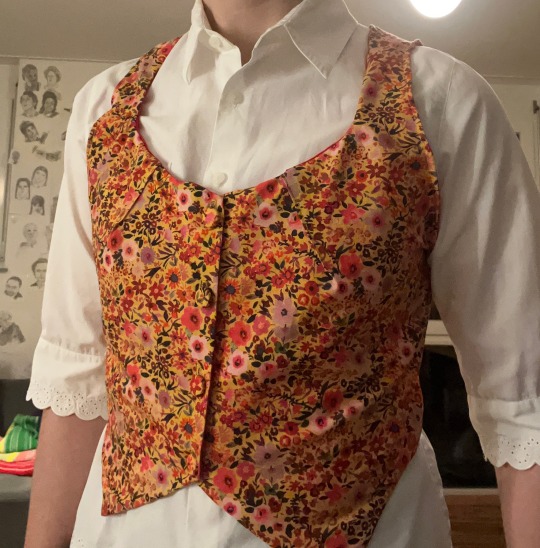
This. THIS. This is the best thing I have ever made. If I show you anything it’s going to be this. A Victorian waistcoat, tailored to my body perfectly without a pattern or a sewing doll, literally the epitome of gender euphoria. God, I love this thing so much.
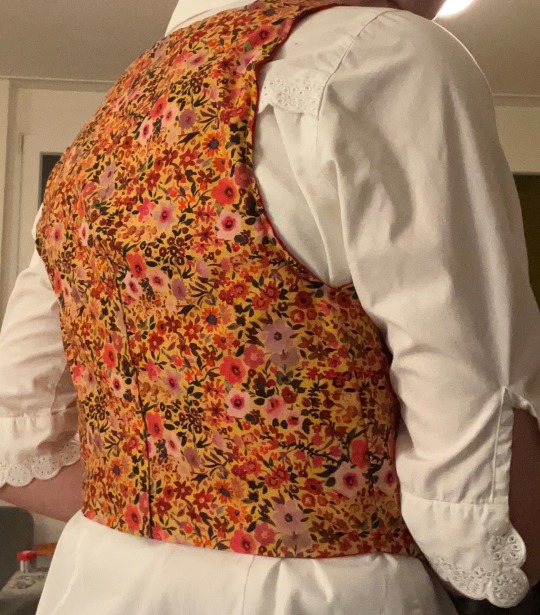
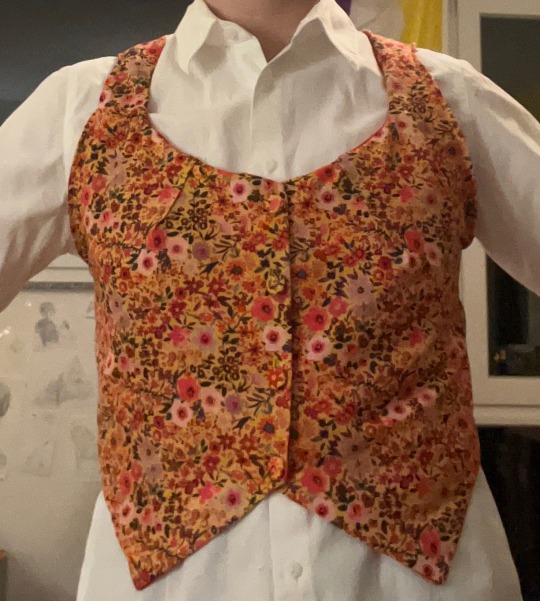
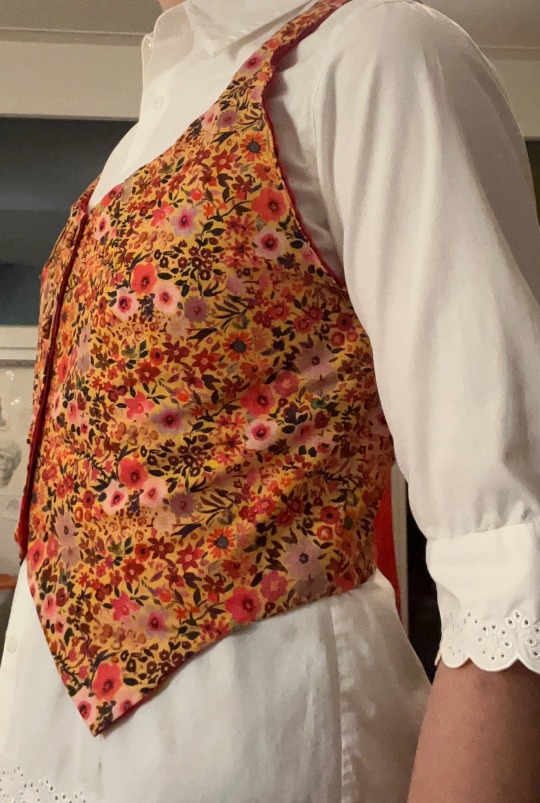
Ok, ok let me ramble a bit on why I love this so much please.
-gender: Victorian men are gender. Victorian men in their shirtsleeves are gender as fuck. as you can see I am somehow completely flat in this. I am not wearing a binder. That was not planned. This waistcoat just loves me.
-✨craftsmanship✨: I am literally so proud of this can you tell? Again, no one believed I could do this and that is the best motivation to get me to do something. I made the pattern myself, by pinning some scrap fabric to myself wearing an undershirt and drawing on lines and then sewing a rough mock-up, which I then altered for several weeks until it was perfect. Then traced the pattern onto the actual fabric. This also has red satin(like) lining on the inside, which means I basically made it twice and then sewed both pieces together. The fabric covered buttons I also made myself.
-I just literally always wanted to own something like that and I could never find anything close. This is why I love sewing. I love sewing so so much. Because I can dream of it and then I can just make it.
Ok rambling over bye <3



131 notes
·
View notes
Text
spike mentioning casually that he has eaten mummy in the past and buffy being kinda horrified at first thinking about ampata but then asking if it's a demon thing and spike going "oh, no, it was back when I was human"
#buffy the vampire slayer#btvs#buffy summers#buffy#spike#on the long list of 'spike is *like that* in part because he's a victorian'#shut up faraige#mummy#mummies#victorians
130 notes
·
View notes
Text
Tête-à-Tech
Some really interesting informal conversations coming up between me and an expert in their field in person in my East Village office:
The Surprisingly Fascinating Story of the American Chestnut Tree on Jun 13 with Anna Sproul-Latimer
Embracing Complexity: Lessons from the Victorians on Aug 15 with Diane Josefowicz
Code and Play on Oct 17 with Daniel Shiffman
How I Learned to Stop Worrying and Love AI on Dec 5 with Ida Benedetto
All of them are on Thursdays and start at 7:00 PM. These events are free and open to the public, but they are small, so if any of these interest you, register for updates now before they fill up. (You can always change your registration later and release you spot to someone from the waitlist.)
Full details and to register: lu.ma/macktez
#events#east village#ai#victorians#code#play#chestnuts#the American chestnut tree#history of science#dinner party#cheese plate#tasty snacks#nice sips#Daniel Shiffman#Anna Sproul-Latimer#Diane Josefowicz#Ida Benedetto
26 notes
·
View notes
Text

Grief transcends time.
While it can be said that the Victorians were obsessed with death, and some of their rituals may seem morbid and garish by today's standards, there is something to be said about the Victorians and how they were prepared for the day when a loved one might die.
Get to know some of the misunderstood mourning customs from the Victorian Era, including jewelry made of human hair, strict fashion guidelines, and even post-mortem photography. Journey back to the American Civil War, and get to know Mary Todd Lincoln and Queen Victoria--two women who publicly grieved for their husbands. You'll soon come to realize that the Victorians were not obsessed with death... but they did accept it... Something we still struggle to do today.
Join the curator of The Traveling Museum of Memento Mori as she introduces you to the history of Victorian mourning customs as well as the customs themselves. You'll learn that there can be beauty in grief and death and that we might be able to learn how to mourn from the Victorians, even in the 21st Century.
https://amzn.to/3XLmVC5
8 notes
·
View notes
Text


Poiple Victorian. 1898 beauty in Oshkosh, WI. 5bds, 2ba, $379,500.

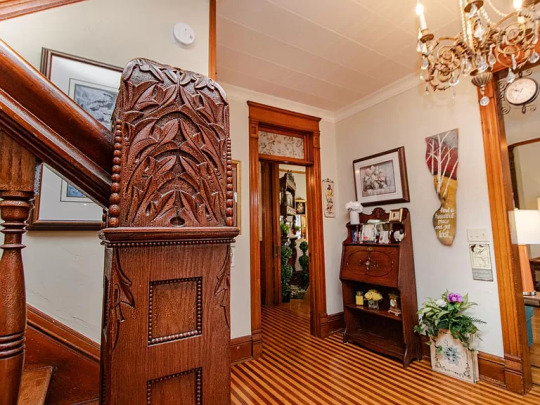
Cute entrance hall and look at the new flooring. The stairs are original- look at that carved newel post.

Oh, wow, look at the carving on the fireplace. Nice sitting room w/plenty of space.

Fits quite a large sectional. Not what I would have, but they must use it as a family room.
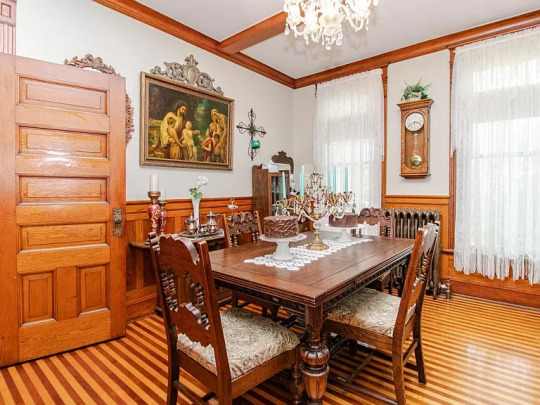
Pretty dining room has beautiful wainscoting, a new floor and original oak door.
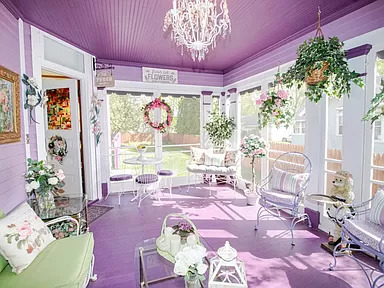

Oh, look at the purple sun porch. This is so pretty.
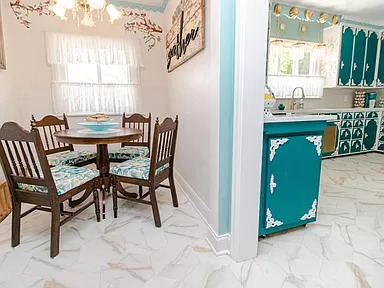
There's a breakfast room right outside the kitchen for every day dining.


Check out the fancy cabinets. Someone got silly with stencils. But, it does have a Victorina design.

I wonder if the cabinets convey.

Off the kitchen is a fancy Victorian powder room.

There's a small landing and the newel posts and railings look so nice.

Decoupaged built-in closet in the hall.

Wow, look at the bath off the hall. It's all dressed up. Even the shower has etched glass.

I guess they have no need for 5 bds. anymore. This one is completely empty. Has a little closet and a transom.
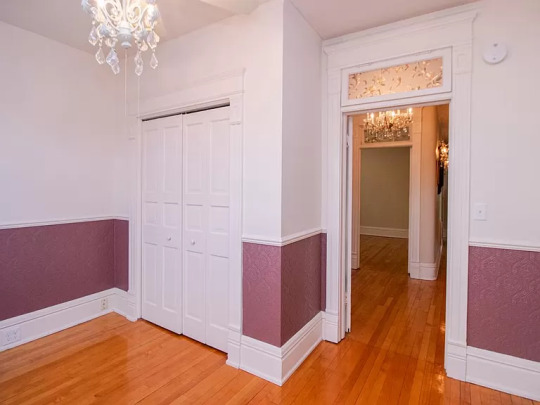
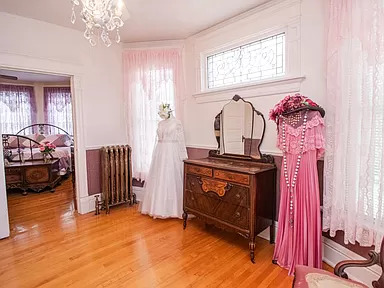
The transoms have fancy glass. It looks like it may be contact paper, though. This room is right off the primary bedroom.


The primary bedroom has doors to the other bedroom and the hall.

I think that this is the house's name, Lady Iris.
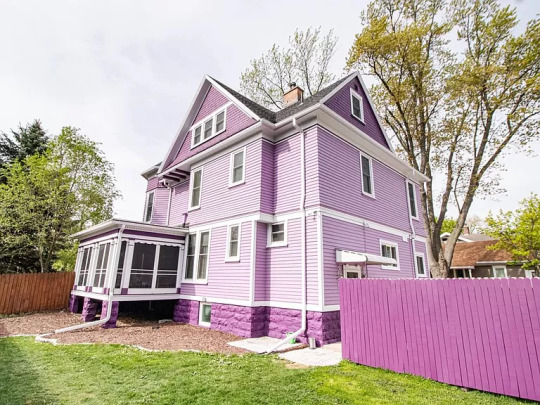
The purple fence matches her painted rock foundation.

I guess you would call this area a patio.
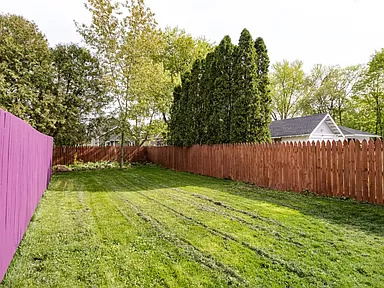
And there's also a very large yard. The property is 9,147 sq ft.

And, it also has a 2 car garage.
https://www.zillow.com/homedetails/222-E-Irving-Ave-Oshkosh-WI-54901/216614212_zpid/
337 notes
·
View notes
Text

A British tourist posing in Samurai armor on a visit to Japan c. 1890.
24 notes
·
View notes
Text
I’m not bad at talking about my feelings, I’m just bad at talking about my feelings in any way that doesn’t make me sound like an elderly Victorian man recounting his life story on his deathbed
64 notes
·
View notes
Text
i NEED a floriography specialist to tell me about types of ribbons and stuff like thorns and leaves. i finally got access to a book on floriography (my mom got it as a gift for my sister, not knowing that i've wanted a flower dictionary for the past 10 years) but it only has the flowers and some bouquet suggestions. i've found nothing on types of ribbons. the only thing ive found online is the "ribbon to the left vs to the right" thing, not the material, and also i don't even get how you could tie it so that it's noticeably to the left or right unless they have a front, like the narcissus or pansies or something. floriography leaves me constantly lacking research material, i never know where to find more information! do i suck at research that bad?
#floriography#seram#flower#flowers#flower language#flower dictionary#victorian#victorian era#victorians#18th century#19th century#1700s#1800s#history#historian#historians#historiography
5 notes
·
View notes
Text




The Necropolis, Glasgow


Another of those Victorian garden cemeteries that I can never seem to stay away from. It was designed to be walked through and enjoyed, as all garden cemeteries were, and speaks to the changing attitudes towards death and afterlife of that era.
#glasgow#garden cemetery#history facts#cemetery#it's the victorians again#victorians#victorian architecture#grave marker#necropolis#beautiful weather#for scotland#Glasgow necropolis#my photos#photography#burial
6 notes
·
View notes
Text
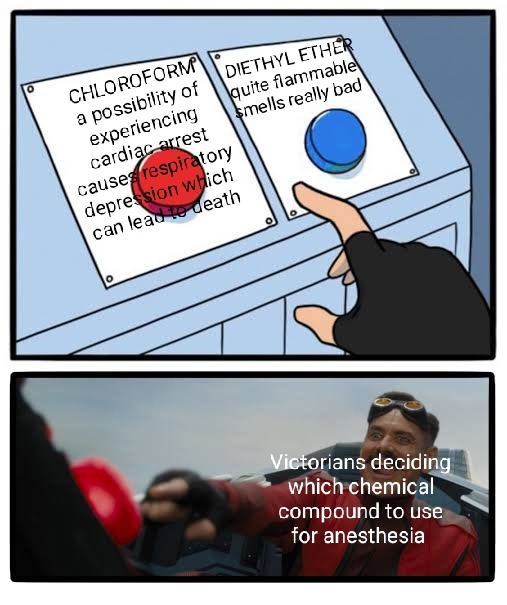
30 notes
·
View notes

